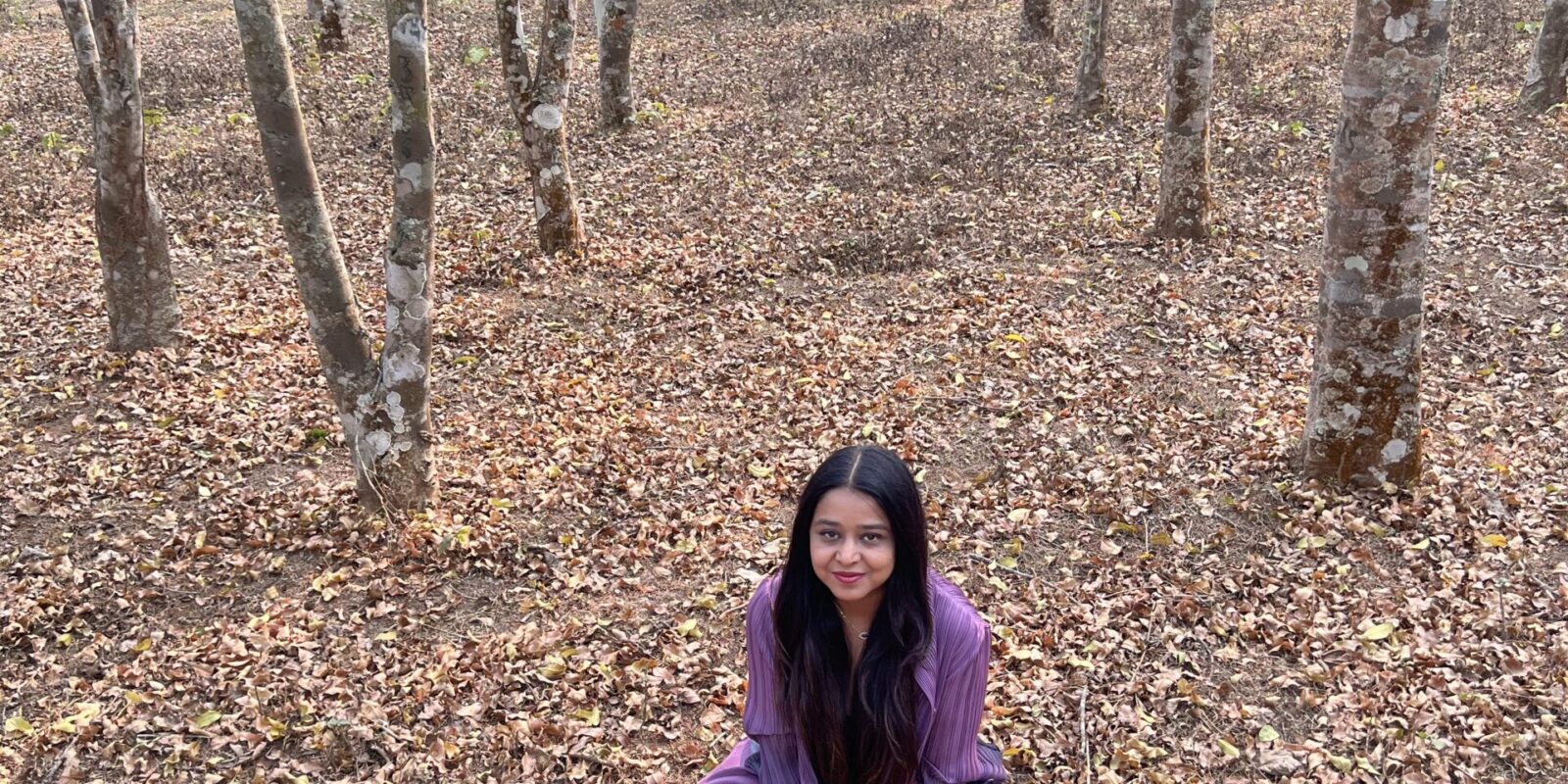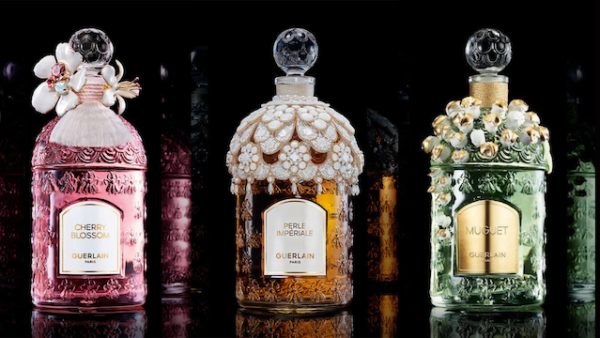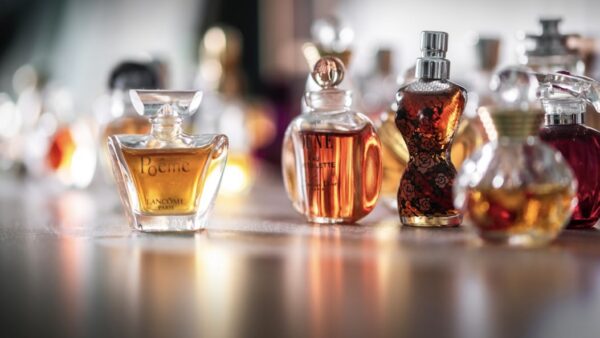You must experience Oudh in its purest and pristine form, a sliver of finely carved wood resting on smouldering charcoal, and let its sweet, smoky fumes waft around you. It’s not what it does to you but how it makes you feel – empowered and celebrated. Perhaps, if validation had a scent, it would be Oudh – comfortable and exalting simultaneously. For me, who has been writing about luxury and talking about fragrances for 15 years, Oudh was an instant hook. I may have grown up with the smell of roses, saffron, and vetiver (which I still very dearly love), but nothing was as hypnotising (and healing) as the smell of Oudh.
What is Oudh?
Contrary to popular opinion, Oudh doesn’t originate in the Middle East. Historians can trace the use of Oudh back to ancient Indian times with evidence from scriptures of various age-old cultures. It has been used in India for over four thousand years. Indian royalty was privy to the many benefits of Oudh and the royal women would use and burn Oudh to purify themselves after childbirth. Abdulla Ajmal, CEO Ajmal Perfumes, explains, “Aquilaria trees, popularly known as Agarwood, are trees native to India, particularly Assam. Simple way if one wants to remember, try and follow the Indian Ocean, it starts from the northeast of India, Bangladesh, Thailand, Cambodia, Laos, Malaysia, Indonesia, and goes up to the south of China.”
Having worked with Ajmal and collaborated with them for three years, we planned the ‘Back To Roots’ Tour, a three-day Oudh trail as a tribute to 72 years of Ajmal and where it all originated: Hojai, Assam. Besides the fact that this was the first offsite event that I had ideated and curated, what left the storyteller in me perplexed was opulence and humility, both of which define Oudh. The experience of the Ajmal Agarwood plantations in Assam was different from any other perfumery-led Media FAM trip for me. I was prepared to witness farms; I had googled it, obviously, and the process also, but I was not expecting the gentle, almost tender care with which each piece of healed agarwood was handled. The perfume enthusiast in me was only captivated to see what lies ahead on this sensorial journey.
Day 1: FARM TO FRAGRANCE
“Oudh oil, one of the rarest and most expensive olfactive ingredients, also called ‘Black gold,’ primarily because of the price (which is also because of the limited yield from the wood of Aquilaria (Agarwood) trees). You need to smell real Oudh to know what it smells like,” urges Ajmal, during the briefing on the first day of the ‘Back to Roots Tour’ in Hojai. As if on cue, one of the staff members walked in with smouldering bits of coal in a Mabkhara (metal burner) and some bits of Oudh in that, inviting us to inhale and draw the scent towards us.


Where did it all begin? As the legend in the Hojai District goes, a rice farmer by trade, Haji Ajmal Ali, ventured into the jungles with nothing more than a dream of changing his family’s modest fortunes and managed to change the face of perfumery. Founded by the Late Haji Ajmal Ali in the early 1950s, the journey of Ajmal Perfumes is indeed the story of ‘A Farmer to A Perfumer’. Though Ajmal Perfumes has carved a niche in the regional perfume industry as an innovator in perfume-making and a pioneer in marketing floriental perfumes to India, the GCC and Western markets, remain true to their DNA. They are known as the best manufacturers and suppliers of Oudh.
Anyone who has visited the Middle-east or stayed there would have tales to share how the day begins with smoking the abayas and kandhuras with a waft of Oudh burned on charcoal. Of course, Oudh is undeniably a part of the cultural DNA of the Middle East. “It is very significant to share Oudh as part of the hospitality at one’s home when a guest arrives and meets and greets them (Majlis). Oudh is also used to infuse clothes before using the other perfumes; that’s the incense part of it,” shares Ajmal on the Middle-eastern connection of Oudh. “During the wedding season, the sale of Oudh also goes up as it is burned copiously during wedding parties as a mark of opulent hospitality. A beautifully carved piece of Oudh is part of the bride’s trousseau. A tiny vial of Oudh oil is a popular wedding giveaway to the inner circle of guests,” he adds.
Day 2: DO THE OUDH

A visit to the processing unit was scheduled. Again an Oudh-infused welcome awaited us; only this time, we learned how to ‘oudh’ the hair like a queen. These days there are electric burners available, but we experienced the carved chip of Oudh in the traditional Mabkhara. You have to be careful as the coal is hot and starts to smoke at the touch of Oudh/ even bakhoor. The trick is to lean over, tilt your head, and lift your hair so it is infused with fumes without ever touching the coal because it will sear.
Transforming freshly cut agarwood into incense chips takes around a month. One week is spent on each step. It begins with carving away the white wood by hand to expose the resin and finally grading the oudh for quality. Many artisans have been working on their craft for at least ten years. The darker the Oudh, the higher grade it is. It was refreshing to see local women also being trained in oudh carving and grading, which was now considered a male bastion.


Later we had the ‘Oudh smelling session’, where we had blotters of Oudh oil from Thailand, Indonesia and India, and maybe I was biased, but I felt that the finest was from Assam. We were then given rare access to the old deg-styled distilleries. And just when I thought this was as exotic and handcrafted as it gets, I was bowled by the traditional method of separating the oudh oil from the water after distillation which is through a sweep of the hands of a master craftsman. Tiny oil droplets cling to his hand, and he transfers every precious droplet into the boat-shaped container. After scraping every drop into it, he gently blows over the oil to separate any water and then pours the oil into a bottle.
Day 3: OUDH- THE SCENT OF HEALING
We started with a visit to Maryam Ajmal Women’s College of Science & Technology. The teachers and students had also planned a tree-planting ceremony for all the media colleagues present, over and above a pantomime program on afforestation. But the highlight of the day was interacting with little minds at the Ajmal Modern Residential School. Soon after, we finally entered the agarwood forests.
It was a windy day, and the falling agar leaves made for a very aesthetic background to step on. The average Agarwood tree is white or pale yellow and is practically devoid of any resin, hence lacking the particular Agarwood odour. It is just like timber and does not have much value. It’s only when the tree is hurt and starts the process of healing that the resin is formed, which in the world of perfumery is priceless. “When a tree gets injured, for instance, by a physical stressor, such as bird peck or a biological stressor, through microbes. At some point, a fungus takes over the injury, and to protect itself, the tree creates an enzyme to destroy the fungus, the oil-like enzyme spreading through the tree. The resulting resin is the coveted oudh, one of the most expensive perfumery ingredients in the world,” explained Ajmal as he walked amidst the agarwood forests.

Strolling in the shadows of tall Agarwood trees reminded me of how I would get hurt as a child so quickly and often. Whether it was climbing mango trees in my grandfather’s backyard, brushing into thorns to smell the roses, or simply playing in the park, my childhood memories are often of skin covered in bruises. My skin was sensitive, so a minor bruise to most of my friends would result in injuries for me. I would get so irritated and stressed with the scabbing that I would peel off the new, slightly ugly, and rough skin layer, only to delay the healing process. It made me realise that recovery can be beautiful, exquisite, and a privilege. I was moved to see how the Agarwood tree secretes an enzyme to repair itself from an injury and how when that imperfect, resilient bark comes into the hands of master craftsmen, it leads to the creation of one of the most exquisite scents, that of Oudh.

WHAT MAKES OUDH SO DESIRABLE?
Oudh, which was earlier a part of an evolved, slightly peculiar Middle-eastern perfume palette, is now the most trending ingredient across traditional fragrances, and contemporary designer and niche fragrances. “Oudh has been around for a very long time in the GCC and has been used as a perfume and a mixer for a raw material mixer for decades. Still, the international community has yet to realise this but has recently started using oudh as a raw material. Although it has been used for longer, most credit goes to Tom Ford, who made it global with the first launch in 2006. Since then, it has been booming and will boom even further,” predicts Ajmal. Though if you were to turn into historical records, the use of Oudh spread to Europe, particularly the royalty of France in the 17th century, as Louis the XIV (The Sun King), known for his excessive indulgences, loved the fragrance so much that he washed his clothes in Oudh.
Oudh is valued strongly by perfumers for its warm sweetness mixed with woody and balsamic notes. It’s an aromatic and complex scent. When used in a perfume composition, Oudh is most often a base note. Essential in every perfume, unlike top notes and middle notes, base notes tend to stay on the skin long after the others dissipate. You’ll likely catch a whiff of it alone hours after applying it in a fragrance with an Oudh base. As with many other expensive perfume ingredients, synthetic Oudhs are produced. Compared to the naturally produced scent, these are nothing short of a disappointment, according to Ajmal. Of course, as a beginner, you might not tell the difference; those who are connoisseurs can figure out the difference. Synthetic Oudh tends to be more leathery and woody—sacrificing its warmth, sweetness, and balsamic notes for the price point.
As an ingredient, oudh is very versatile and can be used with many olfactory families equally easily. In the present moment, where fragrances are more gender-neutral than ever, perfumers and designers are homing to this ingredient to differentiate their composition. It’s the very characteristic of this woody ingredient to enhance the potency of other notes. And when added to florals, it lends a seductive earthy character, which is the line most gender-fluid fragrances take. Traditionally, oudh notes go very well with rosy notes, saffron, and woody, but these days, you find them complementing fresh aromatics as well. If I could describe Oudh olfactive, it would be ‘bougee’ – a diva with a down-to-earth attitude.


If, after reading the story, you are ‘influenced’ and would like to try oudh in your fragrances, remember that there are two types: Pure oudh oils and EDPs. “Some of the most famous ones in our portfolio which has oudh in it include the Amir series, Aristocrat, Patchouli Wood and the ones with pure oudh EDP are Dhan Al Oudh Qadeem, Ajmal Dhan Al Oudh, to name some,” shares Ajmal. However, one fool-proof recommendation is Ajmal Aristocrat (for men), which is entirely gender-neutral if you ask my PoV because of its woody floral character. It has just the hint of oudh, which welcomes you without being overwhelming. Besides its versatility, Oudh is a connoisseur’s delight because it is highly exclusive. Less than 2 percent of wild trees produce it. Perhaps it’s much like love, difficult to find, but once it finds a way to your heart, (or your nose), you are hooked for life.
Edited by Sanjana Salunkhe

Some glimpses from the ‘Ajmal Back to the Roots Tour

And Ajmal's Back to the Roots Tour’ was even more refreshing as I shared it with 12 of the most compassionate women, passionate about art, beauty, culture, and storytelling. Also discover their PoVS:
- https://elle.in/an-ode-to-oudh-tracing-the-roots-of-the-indulgent-scent/
- http://www.beejliving.com/on-the-oudh-trail-in-assam/
- https://www.lifestyleasia.com/ind/style/ajmal-perfumes/





